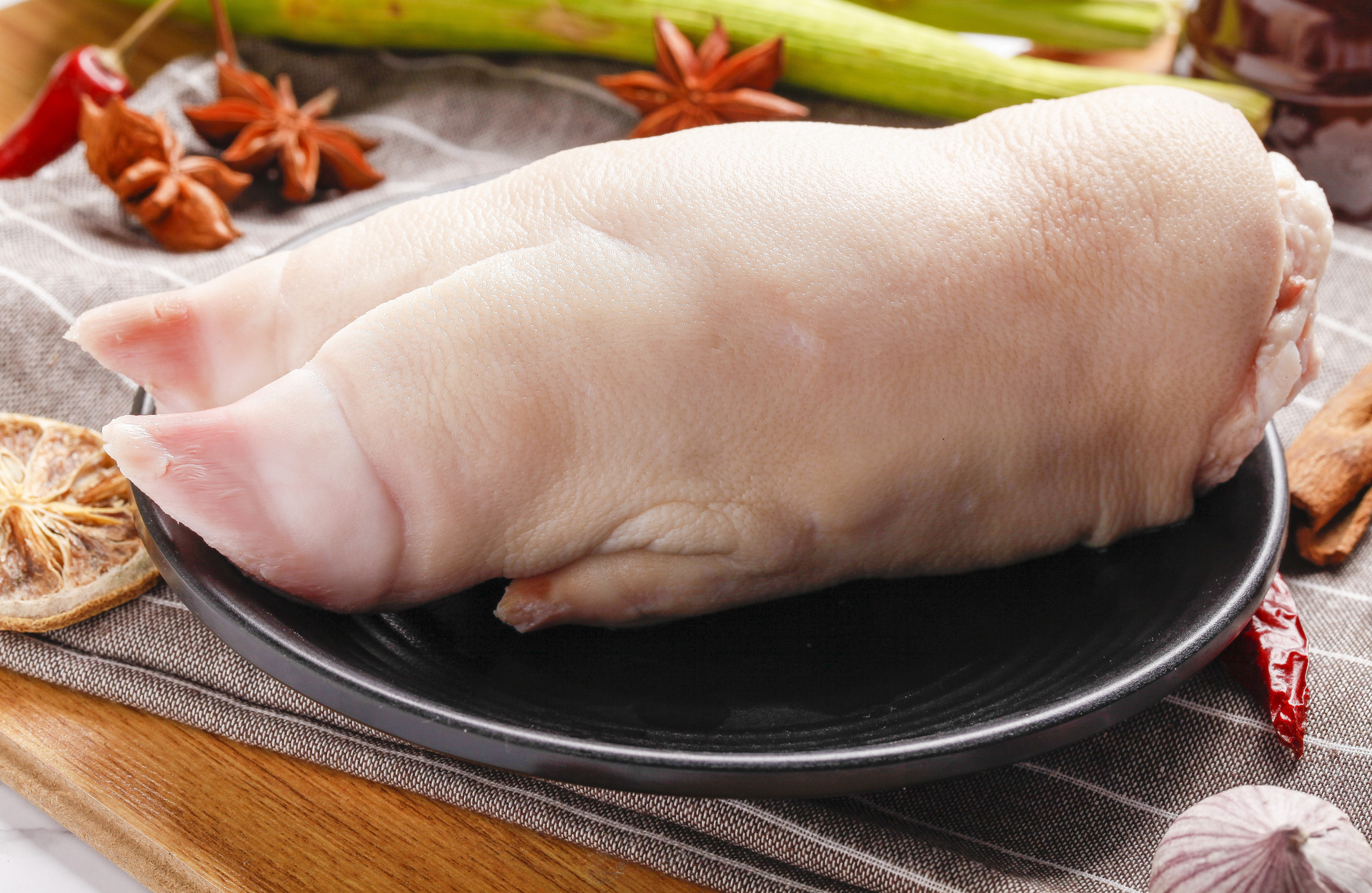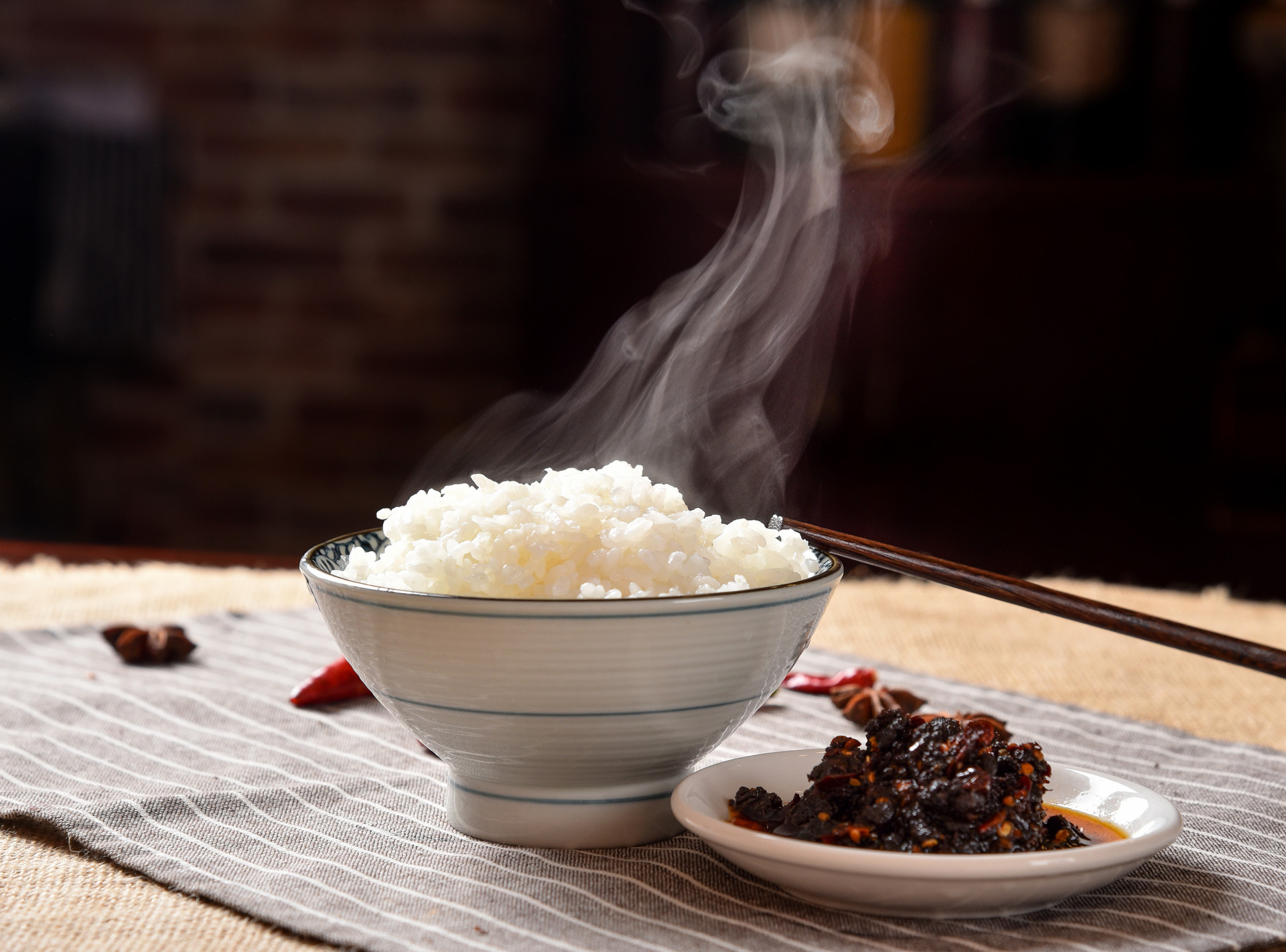Chinese Braised Pork Trotter Recipe
Braised Pork Trotter has a dense and chewy texture, and the trotters are incredibly tender. With just a light bite, the collagen melts instantly in your mouth. This dish is not only delicious but also rich in nutrients, making it a stunning highlight on any dining table.

 4 Comments
4 Comments
1.About Braised Pork Trotter
Braised Pork Trotter is a traditional Chinese dish made primarily from pig trotters. The preparation involves blanching, caramelizing sugar, and simmering with various seasonings. The dish boasts an enticing glossy red color and a tender, chewy texture, rich in collagen. With each bite, it is flavorful without being greasy, leaving a delightful aftertaste. Whether served as a home-cooked meal or at a banquet, Braised Pork Trotter is sure to captivate your taste buds.
2.Ingredients and Substitutes
Ingredients:
Pig Trotters: The main ingredient, rich in collagen, becomes tender and soft when braised.
Garlic, Ginger, and Scallions: These aromatics enhance the dish's fragrance and flavor, elevating the overall taste.
Chili Peppers: Add a hint of spiciness to enhance the dish's flavor profile.
Cooking Wine: Used to eliminate gamey odors and boost flavor.
Dark Soy Sauce and Light Soy Sauce: These sauces contribute color and taste to the dish.
Oyster Sauce: Adds umami and aroma, enhancing the overall flavor.
Rock Sugar: Provides a rich sweetness that deepens the dish's flavor.
Beer: Used in braising to keep the trotters tender and improve flavor.
Substitutes:
Garlic, Ginger, and Scallions: If unavailable, you can use minced garlic, ginger paste, or onion chunks.
Fresh Chili Peppers: Dried chili peppers can replace fresh ones, or you can choose to omit them based on preference.
Cooking Wine: Rice wine or white wine can be used as a substitute.
Dark and Light Soy Sauce: If dark soy sauce is unavailable, increase the amount of light soy sauce and add some additional soy sauce or soy paste.
Oyster Sauce: Substitute with doubanjiang (fermented bean paste) or sweet bean sauce if oyster sauce is not available.
Rock Sugar: White sugar or brown sugar can be used instead.
Beer: If beer is unavailable, you can substitute with water or broth.
3.How to Identify Pig Trotters
In China, people distinguish between the front "hands" (猪手, zhūshǒu) and the back "feet" (猪脚, zhūjiǎo) of the pig. The front "hands" are the source of pig trotters, featuring leaner meat with a higher meat content, and are typically used for braising. In contrast, the back feet have more bone and thinner skin, commonly used for making broth. Understanding these distinctions can be helpful when ordering trotters. Chinese butchers refer to the front trotters as 前蹄 (qiántí) and the back trotters as 后蹄 (hòutí).

Front trotters are usually larger, have more meat, and feature a more flexible and wrinkled appearance with larger tendons. Back trotters, on the other hand, are straighter and tougher. If you do not specify, you might receive back trotters instead. Generally, front trotters are more expensive than the back ones.
For non-Chinese butchers in the U.S., you can specifically request front trotters rather than back trotters, and ask the butcher to cut them into quarters or cross-sections. This makes them easier to eat and allows you to enjoy the delicious marrow.
4.How to Buy Pig Trotters
In the United States, pig trotters are typically found at Asian supermarkets or Chinese grocery stores. When purchasing, you can go directly to these stores and ask the butcher to cut the trotters into uniform pieces, saving you the trouble of doing it yourself. Additionally, you can also purchase them through online platforms like Amazon.
5.Tips for Making Perfect Braised Pork Trotters
Blanching: It's essential to blanch the trotters to remove any off-flavors. Place them in cold water with ginger, scallions, and cooking wine, then boil to skim off any foam before rinsing.
Caramelizing Sugar: This step is crucial. Use low heat to melt rock sugar until it reaches a caramel color, which will give the trotters a beautiful red hue.
Seasoning: Make sure to use plenty of seasonings. Ingredients like star anise, cinnamon, and bay leaves will enhance the dish's aroma.
Long Simmering Time: Cook the trotters on low heat for a sufficient time—typically 1.5 to 2 hours or more—until they are tender and flavorful.
Thickening the Sauce: When reducing the sauce, use high heat and stir constantly to ensure the sauce thickens and evenly coats the trotters.
6.How to Store Braised Pork Trotters
For short-term storage, place the pork trotters in a sealed container and keep them in the refrigerator for 1 to 2 days.
For long-term storage, allow the trotters to cool completely, then portion them into freezer bags, removing excess air before placing them in the freezer. They can be stored for 1 to 2 months, but remember to thaw them in advance before eating.
To reheat, place the Braised Pork Trotters in the microwave and heat on medium-high for 2 to 3 minutes, stirring occasionally to ensure even heating.
7.What to Pair with Braised Pork Trotters
Pair it with rice, where the rich sauce coats the grains, complemented by the tender pork trotters—truly satisfying.

Serve alongside refreshing vegetables, such as cucumber salad or garlic broccoli, to cut through the richness and add a crisp element.
You can also enjoy it with noodles, drenching them in the flavorful broth for a unique twist.
Additionally, try it with cold dishes like mung bean sprouts or spinach and peanut salad for a variety of textures and flavors.
8.More Delicious Recipe Recommendations
Braised Lion's Head (Shi Zi Tou)
Delicious Char Siu (Chinese BBQ Pork)
Sweet and Sour Pork Tenderloin
Fish-Flavored Shredded Pork (Yu Xiang Rou Si)
Detailed Tutorial for Braised Pork Trotters Recipe, Get ready to make your own Braised Pork Trotters!
If you enjoy our recipes, please subscribe to our official newsletter for continuous updates on more quality content!
INGREDIENTS
MAIN INGREDIENTS
- 500g Pork Trotters
ACCESSORIES
- 3 cloves Garlic
- 10 slices Ginger
- 2 stalks Green Onion
- 1 Red Chili
SEASONINGS
- 6 tablespoons Cooking Wine
- 1 tablespoon Dark Soy Sauce
- 1 tablespoon Oyster Sauce
- 2 tablespoons Light Soy Sauce
- 15g Rock Sugar
- 1 bottle Beer
- 10ml Cooking Oil
DIRECTIONS
STEP 1
Prepare and wash all the ingredients, setting them aside for later use.

STEP 2
Clean the 500g pork trotters, then place them in a pot of cold water. Add 3 tablespoons of cooking wine and 3 slices of ginger to blanch.
Tips:
Blanching removes blood and impurities, reducing the pork's odor.
It also cleans off any dust from transportation and storage.
After blanching, the trotters will be clean and firm, allowing them to better absorb flavors and hold their shape during cooking.

STEP 3
Once the water boils, skim off any foam that rises to the surface. Remove the blanched pork trotters and rinse them thoroughly.

STEP 4
Heat 10ml of cooking oil in a pan, then add 15g of rock sugar to caramelize it.
Tips:
Control the Heat: Use low heat to slowly melt the sugar and avoid burning. High heat can cause the sugar to darken too quickly and may burn, affecting the taste and color.
Stir Constantly: Keep stirring while caramelizing to ensure even heating and prevent the sugar from sticking to the bottom of the pan or burning.

STEP 5
Once the sugar has caramelized, add the blanched pork trotters and stir-fry them.

STEP 6
When the trotters turn slightly golden, add the chopped scallions, ginger, garlic, and chili. Then pour in 3 tablespoons of cooking wine, 2 tablespoons of light soy sauce, 1 tablespoon of dark soy sauce, and 1 tablespoon of oyster sauce, stirring well to combine.

STEP 7
After the trotters release their aroma, pour in 1 bottle of beer (500ml) and enough water to cover the trotters. Simmer on medium-low heat for 2 hours.

STEP 8
After 2 hours, increase the heat to high and reduce the sauce, then sprinkle with chopped scallions.

STEP 9
Once the trotters are a vibrant red and glossy, they are ready to serve!

FAQ:
1.Is Pork Trotter Healthy?
Pork trotters are rich in collagen, benefiting the skin by enhancing elasticity and reducing wrinkles. Collagen also supports joint health. Additionally, they contain protein, calcium, and phosphorus, providing energy and nutritional support when consumed in moderation. However, due to their high fat content, excessive consumption may lead to obesity and high cholesterol, so it's important to control portion sizes in your diet.
2. Are Pork Hocks and Pork Trotters the Same?
Pork hocks and pork trotters are different cuts of meat.
Visually, pork hocks are thicker and are usually divided into front and hind hocks, containing more meat and thicker skin. In contrast, pork trotters are relatively smaller and elongated, made up of the hoof tip, tendons, and bones.
In terms of texture, pork hock meat is firmer and chewier, making it suitable for braising or stewing, while pork trotters have a tender, gelatinous texture, especially in the tendon area, which is chewy and ideal for braising or making soup.
Nutritionally, both are rich in collagen and other nutrients, but the specific content may vary.
3. Is Pork Trotter the Same as Pig’s Foot?
Yes, pork trotters generally refer to pig's feet. They are divided into front and hind trotters, which are the legs of the pig. Pork trotters consist of skin, tendons, bones, and a small amount of meat. They are rich in collagen and are commonly used to make delicious dishes like Braised Pork Trotter and pork trotter soup.
4. How to Caramelize Sugar?
There are various methods for caramelizing sugar. Here’s a common technique:
Heat a pan and pour in an appropriate amount of cooking oil to coat the bottom, then remove the oil. Add rock sugar or granulated sugar to the pan and heat slowly over low heat, stirring constantly to prevent sticking. As the temperature rises, the sugar will gradually melt and turn light yellow. Keep stirring until the color deepens to brown. When it reaches a deep brown color, immediately add an appropriate amount of boiling water and continue stirring until well mixed. Increase the heat and continue to cook the sugar until it thickens and turns a bright red color. Once the sugar reaches the desired color and consistency, turn off the heat and transfer it to a bowl for later use.
Tips:
- Use low heat to avoid burning the sugar.
- Stir evenly to ensure even heating and avoid localized burning.
- Be careful when adding boiling water to prevent splattering.
- Use the caramelized sugar promptly, as it will harden if left to cool.
Recipe analyzer
- Recipes: Chinese Braised Pork Trotter Recipe
- Main Ingredients:5
- Servings per recipe:1
- Servings size:555 g
-
Energy (calories):1642 kcal
-
Protein:58.91 g
-
Fat:108.02 g
Why gray?

-
Carbohydrates:106.61 g
-
Protein: 14%234 kcal
-
Fat: 60%972 kcal
-
Carbohydrates: 26%425 kcal

The ratio shows whether the proportion of both fatty acids in your diet is optimal. Red color means too much of Omega 6 or too little of Omega 3. The data are rounded off and approximate.











4 REVIEWS